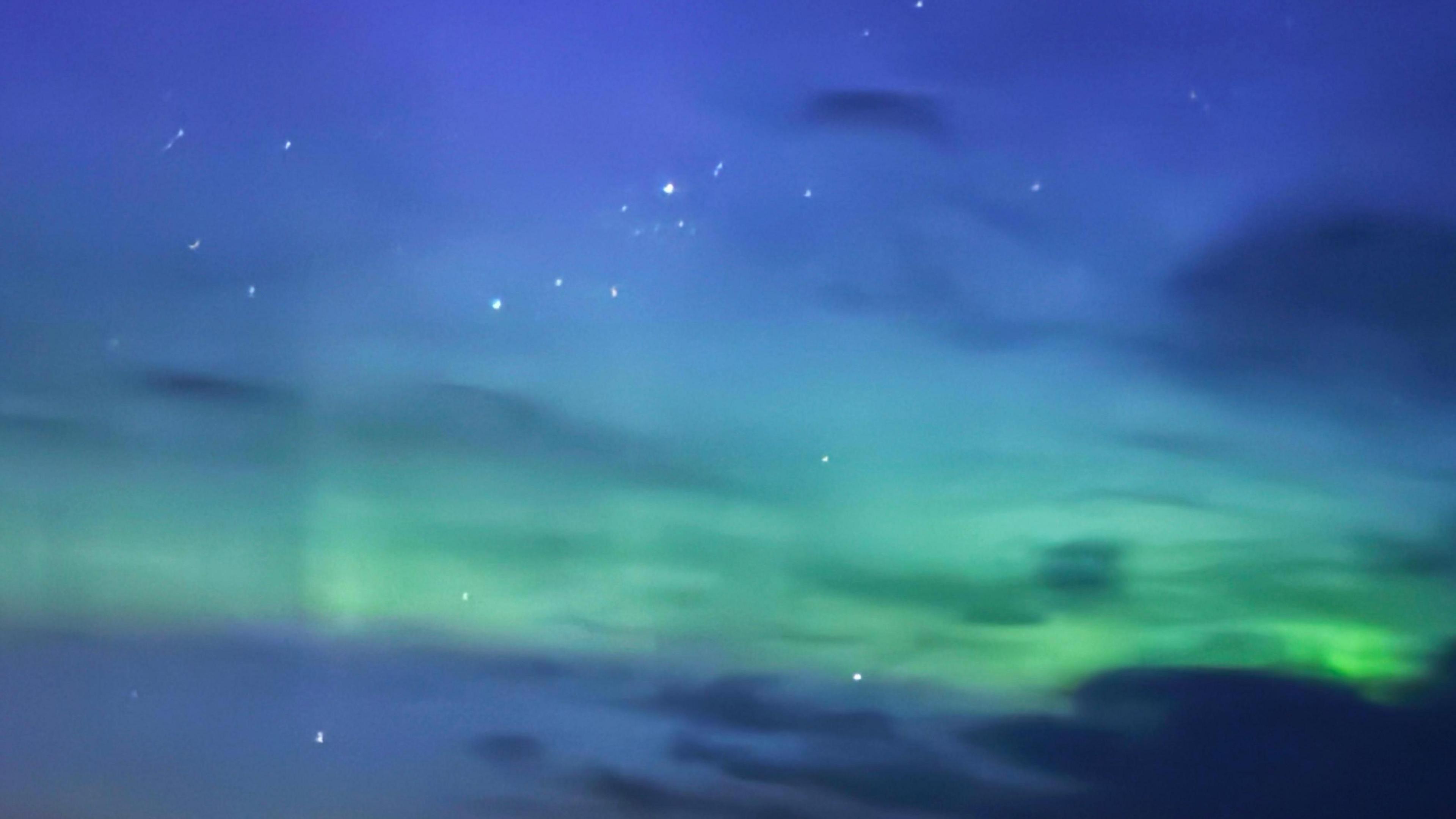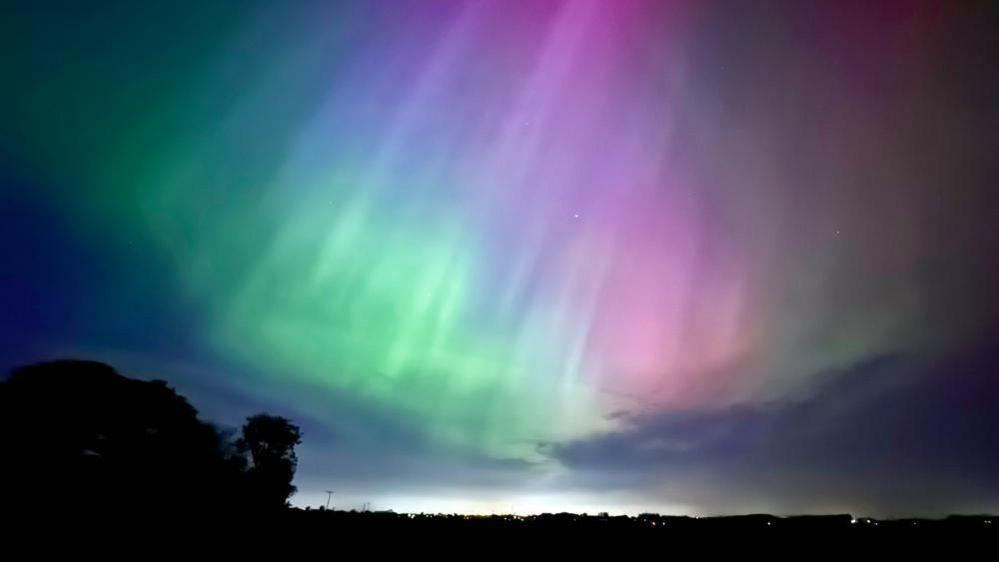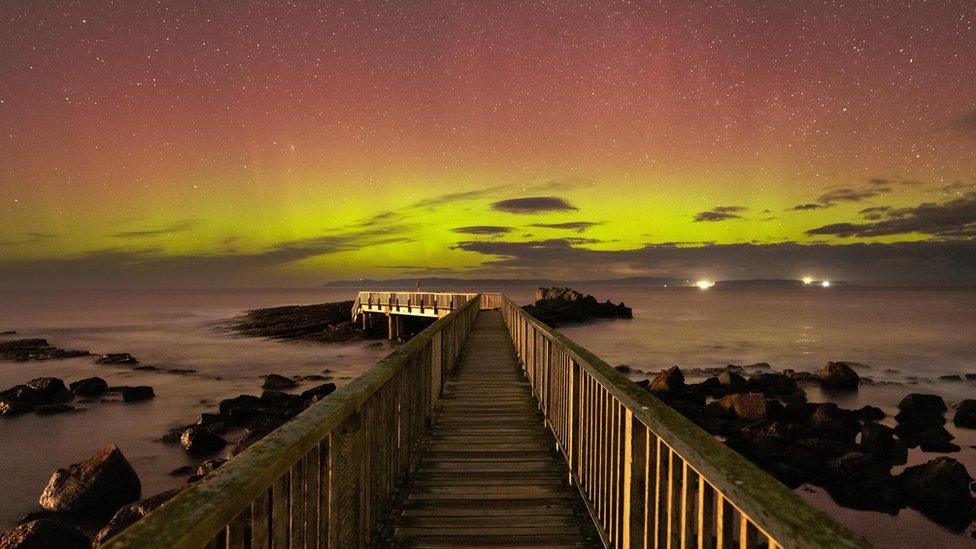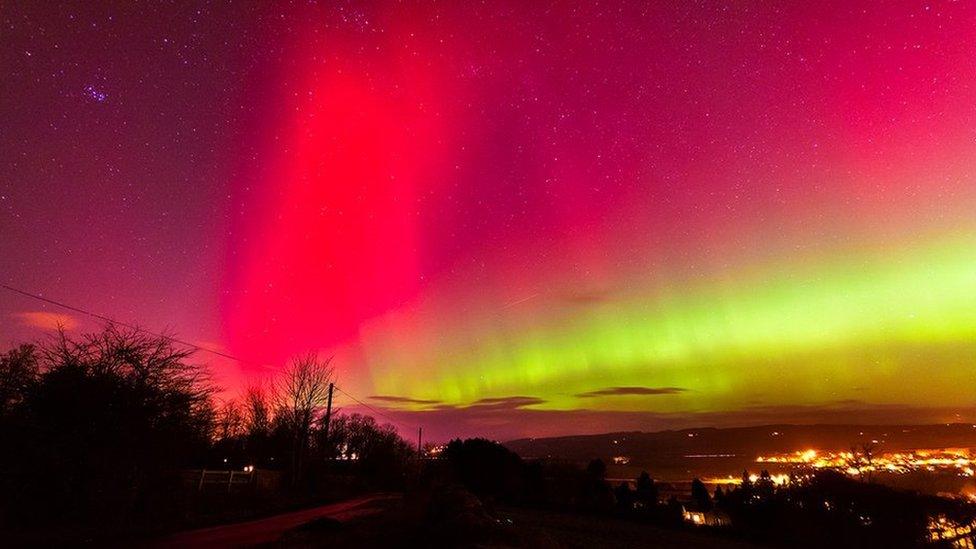Why you probably missed the Northern Lights on Saturday

One Weather Watcher captured the Northern Lights over the Highlands on Saturday
- Published
After the spectacular Northern Lights display on Friday night, expectations were high that we would see similar on Saturday.
Geomagnetic activity indeed remained very high throughout Saturday, so the aurora was above our heads but sadly not when the sky was dark enough to see it.
There were indications that activity would not be in the extreme "G5" category as it was on Friday night but weakened to a severe "G3".
At this level there was still some optimism that aurora would still be visible anywhere across the UK.
It was indeed at this level into the evening but, just as darkness fell, geomagnetic levels fell below the threshold, leaving many of us rather disappointed at seeing nothing.
Activity picked up again after midnight but many of us might have given up by that point.
Northern Lights stun UK in spectacular display
- Published11 May 2024
In pictures: Northern Lights dazzle around the world
- Published11 May 2024
With a large sunspot orientated towards Earth, there has been a lot of solar activity recently.
Numerous Coronal Mass Ejections (CME) – like volcanoes – from the sunspots send charged particles into space and, when directed towards Earth, they give us the aurora.
The CMEs can have varying strengths and different speeds so can sometimes catch each other up and become more powerful just as they hit Earth.
Forecasters at NOAA and the Met Office Space Weather centre are predicting the arrival of another strong CME on Sunday and into Monday.
Geomagnetic activity is expected to be strong to severe (G4) with a chance of an increase at times to extreme (G5).
Therefore, for another chance to see the aurora – anywhere in the UK - you might want to keep an eye on things on Sunday night.
However, there will be more cloud – and thundery showers – across Scotland into northern England and parts of the Midlands which may scupper any chance of seeing the aurora.

The BBC's Phillip Norton photographed the Northern Lights over Grimsby on Friday night
Related topics
- Published5 March 2024

- Published2 January
